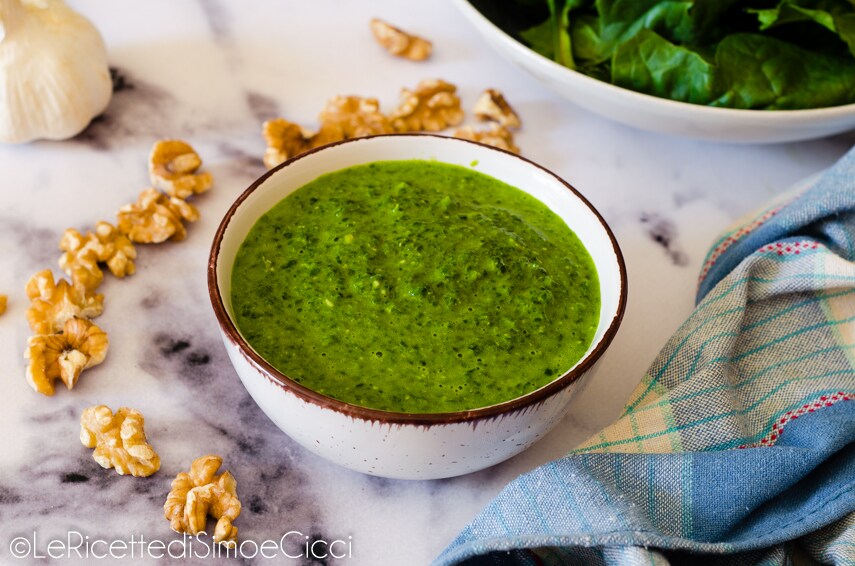
- Difficulty: Very easy
- Cost: Very cheap
- Preparation time: 5 Minutes
- Portions: 4
- Cooking methods: No cooking
- Cuisine: Sustainable
- Seasonality: Spring, Summer, and Fall
- Energy 221.55 (Kcal)
- Carbohydrates 2.52 (g) of which sugars 0.40 (g)
- Proteins 5.29 (g)
- Fat 22.16 (g) of which saturated 4.24 (g)of which unsaturated 1.12 (g)
- Fibers 1.17 (g)
- Sodium 493.81 (mg)
Indicative values for a portion of 70 g processed in an automated way starting from the nutritional information available on the CREA* and FoodData Central** databases. It is not food and / or nutritional advice.
* CREATES Food and Nutrition Research Center: https://www.crea.gov.it/alimenti-e-nutrizione https://www.alimentinutrizione.it ** U.S. Department of Agriculture, Agricultural Research Service. FoodData Central, 2019. https://fdc.nal.usda.gov
Simo and Cicci recommend
You can store spinach pesto in the fridge in a sterilized glass jar for two to three days. If you want to keep it longer, a great alternative is to freeze it in small cups or an ice cube tray.
You can replace walnuts with pine nuts, almonds, or cashews.
If you don’t like garlic, you can omit it.
If you prefer a completely vegan version, you can omit the grated cheese or substitute it with vegan cheese, such as Gondino made from chickpea flour.
You can also add fresh basil leaves to the pesto.
We do not recommend using frozen spinach, which should be cooked before use.

